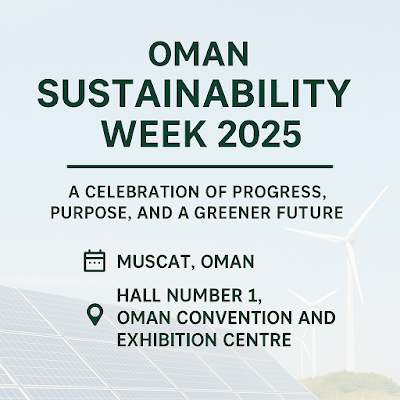Instagram’s Hidden Carbon Footprint: What Every Post Really Costs the Planet
It was a quiet evening when I uploaded a photo of my dinner to Instagram. A simple act, done in seconds. But later, I stumbled upon a startling fact: that single post contributed to carbon emissions equivalent to driving a car several meters. I was shocked. How could such a small digital action have a tangible environmental impact?
Instagram's Environmental Impact: Unveiling the Hidden Carbon Footprint
In today's digital age, Instagram has become an integral part of our daily lives. From sharing moments to exploring new trends, the platform offers endless possibilities. However, beneath the surface lies an often-overlooked concern: the environmental impact of our online activities. This article delves into the carbon footprint of Instagram, shedding light on the unseen environmental costs associated with our digital interactions.
Understanding the Carbon Footprint of Social Media
The carbon footprint of social media refers to the total greenhouse gas emissions generated by the production, transmission, and storage of data associated with social media platforms. Every photo uploaded, video streamed, or message sent consumes energy, contributing to carbon emissions.
Data Centers: The Powerhouses Behind Instagram
At the heart of Instagram's operations are data centers—vast facilities housing servers that store and process user data. These centers consume significant amounts of electricity, often sourced from non-renewable energy, leading to substantial carbon emissions. In 2023, data centers accounted for approximately 1.5% of global electricity consumption, a figure projected to rise with increasing digital demand.
The Energy Cost of a Scroll
Meta's Sustainability Efforts: Progress and Challenges
Meta, Instagram's parent company, has made strides in addressing its environmental footprint. The company has committed to achieving net-zero emissions across its value chain by 2030. However, challenges remain. In 2023, Meta's Scope 3 emissions—indirect emissions from its supply chain and user activities—reached 7.5 million tonnes of CO₂ equivalent, highlighting the complexity of mitigating emissions beyond direct operations.
Addressing Common Concerns: The Hidden Environmental Impact of Social Media
In our daily digital routines, we often overlook the environmental consequences of our online activities. While sending a message or uploading a photo seems harmless, each action contributes to a larger carbon footprint. Let's delve into some common concerns and misconceptions about the carbon footprint of social media and explore how our digital habits impact the environment.
1. "My Social Media Use Is Minimal—Does It Really Matter?"
It's easy to assume that individual actions are negligible. However, when billions of users engage in similar activities, the cumulative effect is substantial. For instance, the average internet user generates approximately 229 kilograms of CO₂ annually through digital consumption, including social media usage. This figure is comparable to the emissions from driving a car for over 800 kilometers.
*This is an illustrative image, please check amazon for actual image
Want to reduce your digital carbon footprint? Start by switching how you charge. The Portable Solar Charger lets you power your phone or tablet using clean energy—anywhere, anytime. 👉 Check price on Amazon
2. "Isn't Digital Communication More Eco-Friendly Than Traditional Methods?"
While digital platforms reduce the need for paper, they introduce other environmental challenges. Data centers powering these platforms consume vast amounts of electricity, often sourced from fossil fuels. Moreover, the production and disposal of electronic devices contribute to e-waste and resource depletion. Thus, while digital communication has its advantages, it's not entirely without environmental costs.Wikipedia
3. "Aren't Tech Companies Addressing These Environmental Issues?"
Many tech giants have pledged to reduce their carbon footprints. For example, Meta aims to achieve net-zero emissions across its value chain by 2030. However, challenges remain, especially concerning indirect emissions from user activities and supply chains. Transparency and genuine investment in renewable energy are crucial for meaningful progress.
4. "Isn't the Impact of Digital Activities Too Small to Worry About?"
While individual actions may seem insignificant, collectively, they have a profound impact. For example, excessive storage of unused data, known as "dark data," contributes to increased energy consumption in data centers. By being mindful of our digital habits, we can collectively reduce the environmental burden.The Guardian
Practical Steps to Reduce Your Digital Carbon Footprint
1. Clean Up Cloud Storage and Emails
Unnecessary files and emails stored in the cloud consume energy due to data center operations. Regularly deleting redundant files and unsubscribing from unwanted newsletters can reduce this energy consumption.
2. Optimize Streaming Habits
Streaming high-definition videos requires more data and energy. Opting for standard definition when high quality isn't necessary can significantly lower your digital carbon footprint.
3. Manage Device Power Usage
Adjusting your device settings can lead to energy savings. Dimming your screen brightness to 70% can save up to 20% of the energy used by your monitor.
4. Limit Unnecessary Communications
Each email sent contributes to carbon emissions. Being mindful of your digital communications, such as reducing the number of emails sent and limiting attachments, can help decrease your digital carbon footprint.
5. Extend Device Lifespan
Manufacturing new electronic devices consumes significant resources and energy. Using your devices for longer periods and opting for repairs instead of replacements can reduce environmental impact.
One of the most overlooked contributors to your digital carbon footprint is outdated electronic waste. Discover practical tips in our article on How to recycle e-waste at home to reduce digital pollution and support a circular economy.
6. Practice Digital Detox
Taking regular breaks from digital devices not only benefits your well-being but also reduces energy consumption. Designating tech-free times or zones in your home can contribute to lower energy use.
7. Choose Energy-Efficient Devices
When purchasing new electronics, look for energy-efficient models. Devices with higher energy efficiency ratings consume less power, leading to reduced carbon emissions over time.
8. Be Mindful of Video Calls
Video conferencing consumes more data and energy compared to audio calls. Turning off your camera when it's not necessary can reduce the carbon footprint of your meetings.







Comments
Post a Comment